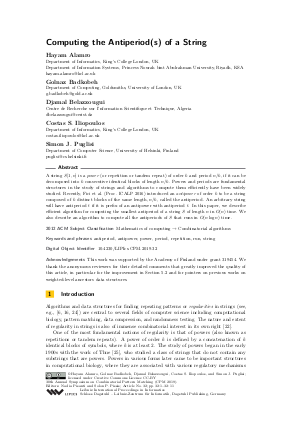LIPIcs.CPM.2019.32.pdf
- Filesize: 424 kB
- 11 pages

 Creative Commons Attribution 3.0 Unported license
Creative Commons Attribution 3.0 Unported license



















Feedback for Dagstuhl Publishing